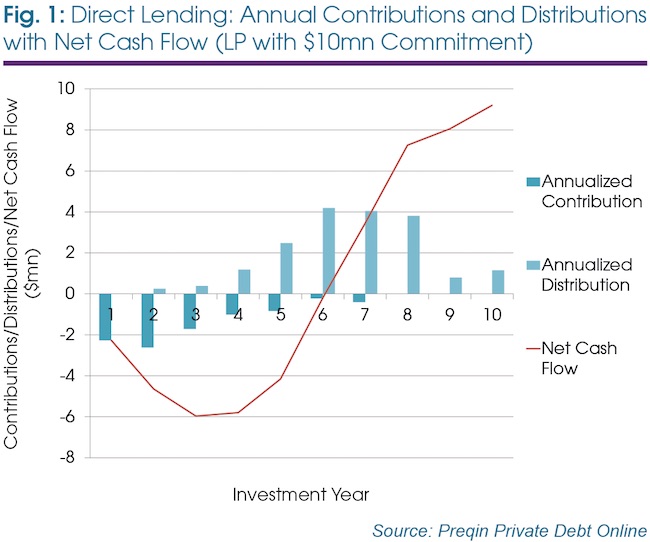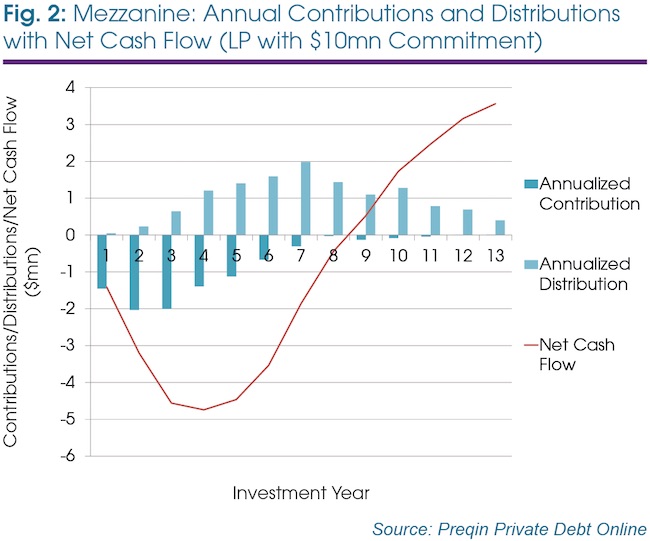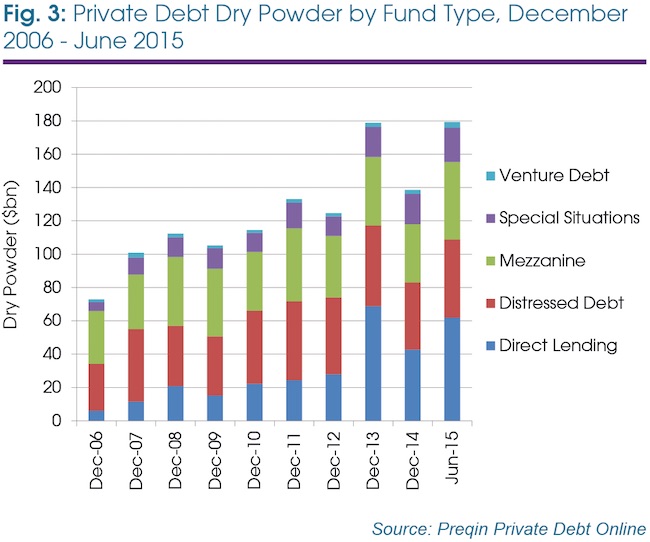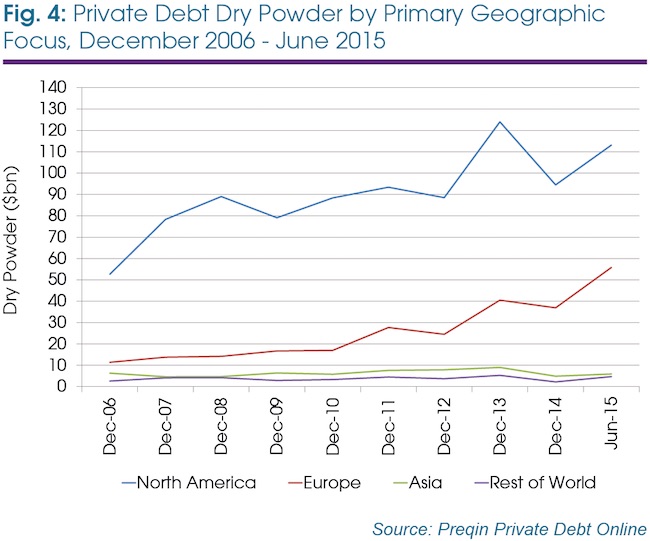This extract from the Preqin Quarterly Update: Private Debt, Q2 2015 offers insight into the annualised contributions and distributions of direct lending and mezzanine funds, as well as examining the current record levels of dry powder in the asset class.
Fig 1 shows the relationship of annualised contributions and distributions, as well as the net cash flows, for an investor with a USD10 million commitment to a direct lending fund. This examination of the typical cash flows to and from an investor further highlights the relative illiquidity of the private debt asset class. Given the lower risk/return profile of direct lending funds, net cash flows typically break even earlier than other private debt strategies, during the sixth year of the investment on average.
As shown in Fig 2, mezzanine fund net cash flows break even mid-way through the eighth year of investment, illustrating a significantly longer delay in expected positive cash flow to the underlying investor.
Fig 3 shows that total dry powder available to private debt fund managers globally has increased by 29% in the period since December 2014. The total figure currently stands at USD179 billion, the highest level witnessed to date. Direct lending funds currently hold the highest amount of dry powder at USD62 billion, up 45% compared to December 2014. Distressed debt and mezzanine funds have also seen notable increases in the amount of dry powder they hold, with increases of 16% and 33% since December 2014 respectively.
Through Q2, Europe-focused private debt funds witnessed large increases in dry powder, up 51% since December 2014, with available capital now standing at USD56 billion, as shown in Fig 4. Dry powder available to North America-focused funds stands at USD113 billion, up 20% compared to December 2014.
Preqin releases quarterly reports covering private equity, hedge funds, infrastructure, real estate and private debt. All five quarterly updates can be accessed for free in our Research Center.











